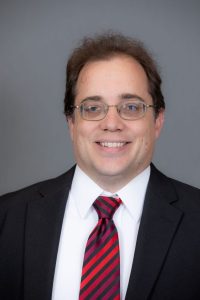
Researchers at Iowa State University are exploring an approach to attack implant infections by using ultrasound technology to avoid invasive procedures.
According to Timothy Bigelow, an electrical engineering professor at Iowa State, bacterial biofilms are a grouping of bacteria surrounded by a protective film, making them resistant to antibiotics and other treatments.
These biofilms can form on a variety of medical implants, such as artificial heart valves or hernia meshes, creating an infection that can be difficult to eliminate. Doctors then have to remove the implant, allowing the infection to clear before placing a new one.
Bigelow and his research team at Iowa State are developing a non-invasive solution using ultrasound waves.
The use of ultrasound in this research is focused on breaking down the biofilms, making it possible to treat the underlying infection, without removing the implant.
The ultrasound waves destroy the biofilm’s structure, and the bacteria within can be exposed to either antibiotics or the body’s immune system, allowing for effective treatment.
“We’re destroying that biofilm with the ultrasound, non-invasively,” Bigelow said. “If you have an infection on a medical implant, in our case, hernia mesh, we’re able to destroy the biofilm. That allows the bacteria to be treated with antibiotics or with the body’s immune response, whereas otherwise, the infection would continue.”
Bigelow explained that the method works by sending targeted ultrasound waves to the site of infection. These waves then break apart the biofilm, causing minimal damage to the surrounding tissues.
One of the biggest challenges with this technology, however, is that hernia meshes do not show up well on traditional ultrasound imaging, Bigelow said.
Part of the project is trying to develop ways to see the hernia mesh better and visualize it for other purposes. Here, he works closely with statisticians and clinical collaborators to provide guidance.
According to Bigelow, infections are a rare but serious complication, typically occurring within the first few weeks after implantation. Unlike other implants, such as heart valve replacements, hernia meshes are not as complex to treat. They are located near the surface of the body, making them more accessible for ultrasound treatment.
Implants used in more complex areas, such as the heart or brain, would present challenges due to treating multiple surfaces of the implant and the difficulty of targeting infections in dynamic and mobile areas, Bigelow explained.
“Once we are able to confirm that we can treat infections effectively, we will work more closely with our clinical collaborators and see if we can take this technology into human patients,” Bigelow said.
Bigelow discussed some challenges in securing consistent funding for the ultrasound biofilm research, noting that funding rates from sources have decreased over time, from about 30% to 40% funded in the past to around 10% now. This led to gaps in his funding with one instance of a four-year hiatus between grants.
Currently, the project has received funding from the National Institutes of Health (NIH).
For more information on this research, reach out to Timothy Bigelow.

